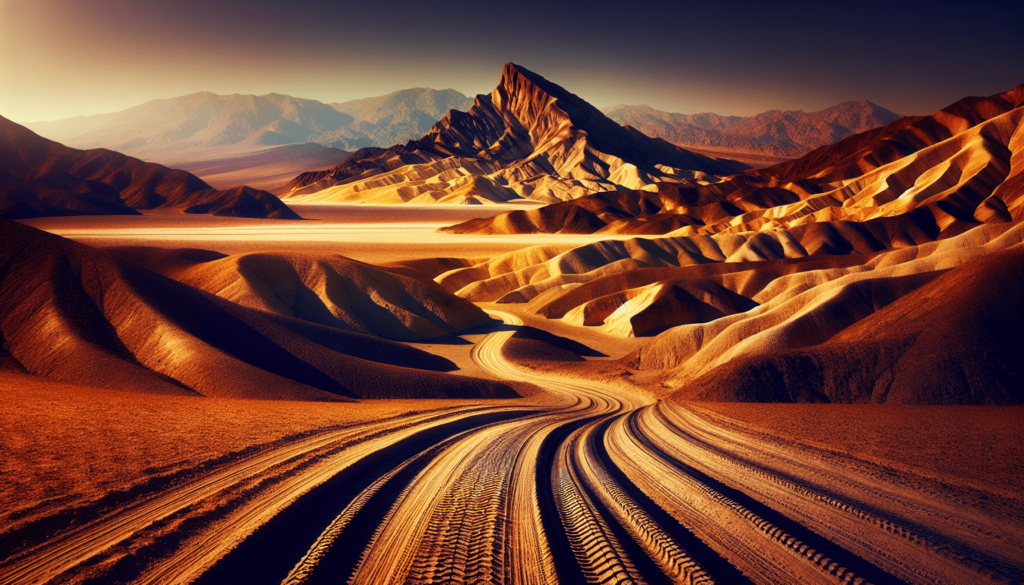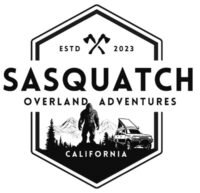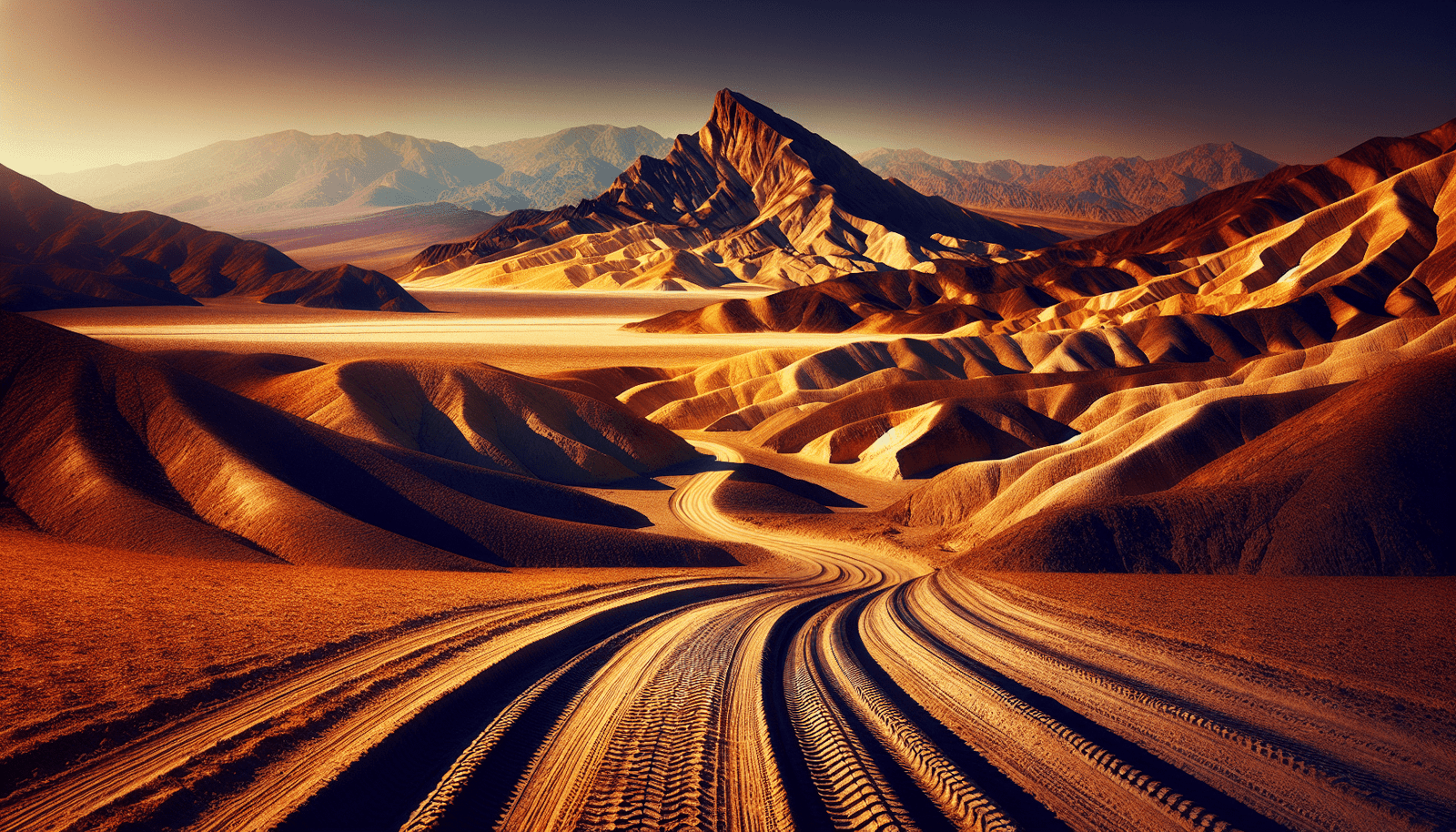Have you ever wondered what it would be like to traverse the rugged terrains of Death Valley, one of the hottest places on Earth? If you’re intrigued by the idea of overcoming challenging trails and immersing yourself in dramatic landscapes, the Death Valley Mountain Overland Route in California might just be your next adventure.
Understanding Death Valley
Death Valley is a vast desert located within the Mojave Desert and is part of the larger Death Valley National Park. This unique area is famous for its extreme temperatures, stunning vistas, salt flats, and a variety of geological wonders. The landscapes in Death Valley tell a tale of survival and harsh environmental conditions, drawing adventurers from all around the world.
Geographic Features
When you think of Death Valley, images of vast deserts might come to mind. However, this region is marked by diverse geographic features that include:
- Mountains: The Panamint Range and the Amargosa Range frame the valley, with several peaks exceeding 11,000 feet.
- Valleys: The namesake valley itself is one of the lowest points in the United States, sitting at 282 feet below sea level.
- Salt Flats: The Devil’s Golf Course and Badwater Basin are notable salt flats that provide unique ecosystems and are visually striking.
These diverse features not only make Death Valley a beautiful destination but also a challenging environment for those who enjoy off-road driving and exploring.
The Death Valley Mountain Overland Route
The Death Valley Mountain Overland Route is a scenic yet challenging expedition tailored for enthusiastic off-roaders and adventure seekers. You will navigate through mountainous terrain, cross rugged trails, and witness unparalleled views, making it an unforgettable experience.
Route Overview
This route typically takes participants through a variety of landscapes, including rocky hills and arid valleys, leading to unparalleled vistas. The pathway is suited for high-clearance vehicles, and many sections venture onto unpaved terrain.
Key Highlights of the Route
| Highlight | Description |
|---|---|
| Desolation Canyon | A remote area showcasing the remnants of ancient volcanic activity. |
| Telescope Peak | The highest point in Death Valley, offering breathtaking views. |
| Charcoal Kilns | Historic structures once used for charcoal production, nestled in the Panamint Mountains. |
| Wildrose Peak | An excellent hiking destination, rewarding you with panoramic views. |
As you traverse the route, you’ll enjoy the serene beauty surrounding you, far from the hustle and bustle of urban life.
Preparation and Safety
Before setting out on this adventurous route, adequate preparation is crucial. Here are some essential steps you might want to consider to ensure a safe and enjoyable experience.
Vehicle Requirements
Your vehicle will need to be capable of handling rough terrain. Here’s what you should look for:
- High Clearance: A vehicle designed to handle rocky surfaces and rough trails.
- All-Wheel Drive: Enhanced traction for navigating through loose gravel and sandy patches.
- Spare Tire: Always carry a spare tire and necessary tools for handling any flat situations.
Essentials to Bring
Make sure to pack accordingly for your adventure. Here’s a handy checklist:
| Essential Item | Reason |
|---|---|
| Water | Staying hydrated in the desert is vital. |
| First Aid Kit | Essential for treating minor injuries. |
| Maps or GPS | For navigation in the vast sprawl of Death Valley. |
| Food | Nutritional snacks for energy while on the go. |
| Sun Protection | Sunscreen, hats, and sunglasses are must-haves. |
Preparing adequately can significantly enhance your experience and keep you safe.

Navigating the Route
Once you’re geared up and ready, navigating the Death Valley Mountain Overland Route can be both challenging and exhilarating. Knowing how to tackle the terrain will set you up for success while you’re out adventuring.
Road Conditions
The road conditions on this route can vary. Here’s what you might encounter:
- Rough Terrain: Expect rocky paths and uneven surfaces that require careful maneuvering.
- Loose Gravel: Be prepared for sections of loose gravel where traction may be compromised.
- Sharp Turns: Stay alert for sharp curves that can catch you off guard.
It’s important to keep your speed manageable. This allows for better control of your vehicle, especially around sharp turns and on downhill sections.
Navigation and Landmarks
While navigating, it’s useful to keep certain key landmarks in mind. Some essential ones include:
- Dantes View: A viewpoint offering stunning panoramas of the valley floor.
- Mineral King Road: Accessible paths leading to other scenic areas.
- Golden Canyon: A popular hiking trail that showcases beautiful colored rock formations.
Be sure to frequently check your map or GPS as you can quickly lose your way in this vast expanse.
Experiencing Death Valley’s Unique Ecosystem
While you’re traversing the rugged terrains of Death Valley, be aware of the unique ecosystems that thrive in such seemingly harsh conditions. The flora and fauna here have adapted brilliantly to survive.
Flora
You might encounter various plant species that have adapted to the arid landscape:
- Joshua Trees: Iconic for their distinctive shape, these trees grow slowly but can live for centuries.
- Creosote Bush: The most common plant, it has a strong aroma and is known to thrive in extreme conditions.
- Cacti: Several varieties, including barrel cacti, provide a unique look and vital moisture storage.
Fauna
The wildlife in Death Valley is both diverse and resilient. Look out for:
- Bighorn Sheep: These agile animals navigate steep terrain effortlessly.
- Desert Tortoise: A symbol of desert life, often seen sunning themselves on warm rocks.
- Various Birds: You might catch glimpses of hawks, roadrunners, and other bird species that call this landscape home.
Understanding the ecosystems enriches your experience and helps foster a deeper appreciation for the environment.

Camping and Accommodation Options
If you’re considering extending your stay in Death Valley, there are various camping and accommodation options available that cater to different preferences.
Campgrounds
There are several campgrounds throughout Death Valley National Park. Here’s a brief summary of a few popular options:
| Campground | Features |
|---|---|
| Furnace Creek | Offers amenities like restrooms and showers. |
| Stovepipe Wells | A more rustic experience with basic facilities. |
| Mesquite Flat Dunes | Allows for stunning sunset views over the dunes. |
Camping within the park not only provides a unique experience but also allows you to witness the night sky unspoiled by light pollution.
Nearby Lodging
If camping isn’t your style, there are several lodges and hotels nearby:
- Furnace Creek Ranch: A popular choice with various amenities, including a restaurant and pool.
- The Ranch at Furnace Creek: Offers a more resort-like experience with comfortable accommodations.
- Stovepipe Wells Village: Provides basic rooms and access to dining options.
These options allow you to recharge for another exciting day of exploration.
The Best Time to Visit
Timing your visit can significantly impact your experience in Death Valley. Depending on the time of year, the weather can vary greatly.
Seasonal Insights
- Winter: Generally the best time to visit, with cooler temperatures averaging around 60°F. Ideal for outdoor activities.
- Spring: Wildflowers can bloom, adding vibrant colors to the desert landscape, with mild temperatures.
- Summer: Extremely hot, with daytime highs often exceeding 120°F; not recommended for outdoor adventures without proper precautions.
- Fall: Another favorable time with pleasant weather, perfect for exploring.
Choosing the right season allows you to enjoy the beauty of Death Valley without the extreme temperatures that can impact your adventure.
Essential Tips for Your Journey
As you plan for your adventure in Death Valley, here are some friendly tips to keep in mind:
- Stay Hydrated: Always drink plenty of water to avoid dehydration, particularly in the summer months.
- Check Weather Conditions: Before you head out, check the weather to avoid any unexpected changes.
- Respect Wildlife: Keep a respectful distance from wildlife and do not feed them; it’s crucial to maintain the natural balance.
- Leave No Trace: Be sure to pack out what you pack in, ensuring that Death Valley remains pristine for future visitors.
Following these guidelines not only enhances your safety but also contributes to the preservation of this unique environment.
Conclusion
The Death Valley Mountain Overland Route offers an extraordinary opportunity to embrace the beautiful yet rugged landscapes of Death Valley. With careful preparation, awareness of safety considerations, and a deep appreciation for the unique ecosystems, your adventure is sure to be memorable. Whether you seek the thrill of off-roading or the tranquility of stargazing at night, Death Valley has something special to offer everyone. So grab your gear, plan your trip, and get ready for an unforgettable experience in this strikingly beautiful desert.

